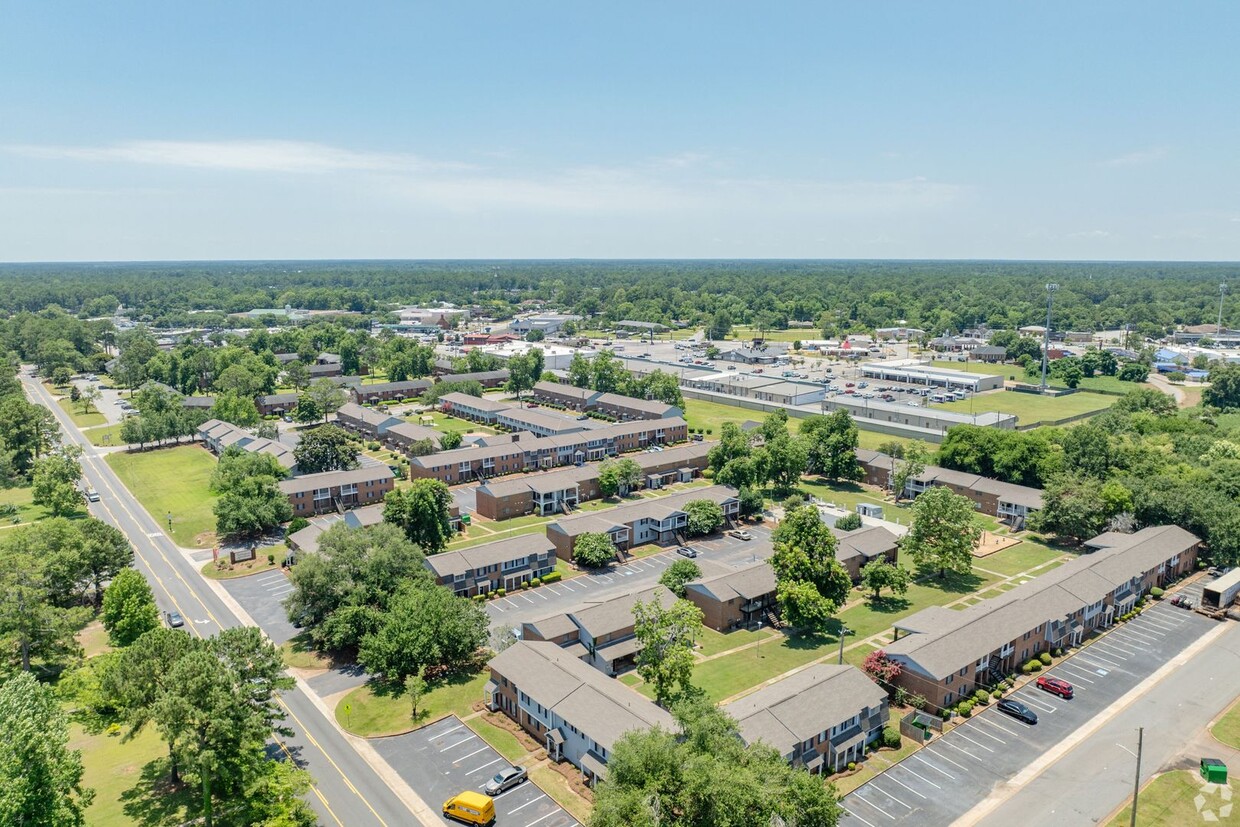Investing in Affordable Housing: Everything You Need to Know
Investing in Affordable Housing: Everything You Need to Know
Investing in affordable housing may be appealing to multifamily investors for several reasons. There is consistent demand for these properties, and they are often viewed as recession-proof. At the same time, they give investors an opportunity to invest in social impact and/or the well-being of their own community. However, the regulations and financing mechanisms involved in investing in affordable housing can be complicated, and often differ from state to state or city to city.
Understanding the basics of affordable housing is necessary before navigating the complexities of specific projects.
To that point, we will consider a few important affordable housing terms before reviewing the basics of Low-Income Housing Tax Credits, Section 8, HAP Contracts, and loan programs.
What is Affordable Housing?
Affordable housing provides housing for members of society with limited income.
Property owners receive tax credits if they use a percentage of their property as affordable housing. Property renters also receive government assistance in paying their rent every month. There are five groups of people that typically in need of affordable housing.
Important Terms for Investing in Affordable Housing:
AMI (Area Median Income): AMI is used as a measure of how a family’s income compares with the median income of all families in a geographic area. AMI is commonly used by HUD to determine eligibility for housing programs. HUD publishes these medians on their website annually.
HFA (Housing Financing Agency): HFA’s are often responsible for administering housing tax credits at the state level.
HUD (The United States Department of Housing and Urban Development): HUD has developed programs to encourage the creation of housing that is safe and affordable for those who are elderly, disabled or have low income.
PHA (Public Housing Agency): A PHA is any State or local governmental instrumentality that is authorized to engage in or assist in the development or operation of housing for low-income families.
Very Low-Income Family: A “very low-income family” is defined as a family whose annual income is at or below 50% of the median income of the area in which the project is located (adjusted for family size).
Five Groups that Need Affordable Housing
Seniors and the Disabled
People who are 65 years of age or older and people with disabilities tend to need affordable housing.
These individuals need housing that is modified to assist them in their everyday living. These modifications can include ramps, wheelchair-accessible bathrooms and entryways, handrails, and modified closets and cabinet spaces.
Students
Off-campus housing is very common for many college students. Many upperclassmen tend to live off campus during their college years. These students need to live near public transportation, the school in which they attend, and other necessities such as retail and grocery stores.
Adult students with families need private housing instead of dorm rooms and international students need housing that is available to them year-round due to travel costs.
Military Members
Military service members having housing options both on and off their base. When a military member lives off the base, they need custom construction, location assistance, and purchase financing.
Off-base housing needs to be close in proximity to where they are stationed. Also, each brand of service has specific guidelines for their housing accommodations.
Rehabilitation and Re-Entry Programs
This type of affordable housing is considered “transitional housing”. People living in these accommodations can be the homeless, recovering addicts, those fresh out of correctional facilities, and more.
Housing Choice Voucher Program Section 8
The housing choice voucher program is the federal government’s major program for assisting very low-income families, the elderly, and the disabled to afford decent, safe, and sanitary housing in the private market.
Since housing assistance is provided on behalf of the family or individual, participants are able to find their own housing, including single-family homes, townhouses and apartments. The participant is free to choose any housing that meets the requirements of the program and is not limited to units located in subsidized housing projects.
Requirements for Investing in Affordable Housing
(According to Investopedia)
Know the Median Income: People investing in affordable housing should know the median income for the area to determine what type of return they might get when buying an investment property and using it specifically for affordable housing.
Profitability: In order to determine the potential profitability of an investment, you need to estimate your operating expenses. For rental units, start with the taxes and insurance you pay as the owner. Make sure to include any utilities, building, and grounds maintenance costs, and transfer costs such as inspection, occupancy certification, registration, and other fees required by your county or municipality. Don’t forget to include debt services.
For sale units, you need to determine your financing and closing costs at acquisition and at the time of sale, material and labor costs for construction or rehabilitation, and transfer costs. It is also important to determine your income. Use the amount of expected gross income per affordable unit. Make sure you also consider your cash flow. If you pay utilities, some programs allow additional amounts to be paid by the subsidizing authority to cover a portion of tenant utilities.
Marketing: When you’re investing in affordable housing should locate and modify units that meet guidelines for rental subsidies available through local housing authorities. If you are a seller, focus on trying to minimize construction and rehabilitation costs for units to be sold on the market.
Invest in Opportunity Zones through an Opportunity Fund:
Opportunity zones are designated geographic areas that have been identified as low-income census tracts. These areas offer preferential tax treatments to those that invest in the specified areas through an opportunity fund. The investors can roll their eligible capital gains into a qualified fund and gain the following according to Million Acres:
- The ability to defer capital gains taxes until Dec. 31, 2026.
- A reduced tax payment on original capital gains on a step-up basis ranging from 10% to 15%, depending on the length of time the investment is held.
- A 0% tax on profits derived from the Opportunity Fund if held for 10 years or more.
Different Affordable Housing Programs for People Investing in Affordable Housing
1. Low-Income Housing Tax Credit
The Low-Income Housing Tax Credit (LIHTC) is a federal income tax credit established as an incentive for private investors to invest in affordable rental housing. LIHTC, also known as Section 42, is used to fund most of the affordable housing construction in the United States.
These tax credits can be used to support rehabilitation and/or acquisition of existing structure as well as new construction projects.
LIHTCs are often traded by developers to investors for equity. The investors are often corporations using the credits as tax shelter, while the developers benefit from additional equity to finance their project.
Allocation
Allocation of the tax credits is guided by HUD regulations but controlled by states. State HFAs often allocate the tax credits based on high-poverty census tracts, high-cost development areas and state priorities. States provide annual Qualified Allocation Plans that outline the specificities of their allocation plan and priorities.
Criteria/Considerations
Originally, eligibility for LIHTC required 20% of the units in the property to be affordable to a household earning 50% or below the AMI or a minimum of 40% of the units to be affordable to a household earning 60% or below the AMI. A 2018 amendment to Section 42 stated that households earning up to 80% of AMI are allowed in LIHTC-assisted units as long as the average income of all households remained at 60% of the AMI or below.
In exchange for the tax credits, investors are required to comply with investment regulations for 15 years and meet affordable rent requirements for at least 30 years (longer in some states).
There are two types of LIHTCs, a 9% tax credit and a 4% tax credit.
Funds for a 9% tax credit are allocated to states annually by the IRS for distribution. States then determine which projects win these highly competitive tax credits through their Qualified Allocations Plans. The criteria differ year to year, but may include extended affordability periods, projects that pertain certain characteristics (preservation), location (areas with low poverty rates, access to good jobs, public schools, etc.), and incentives for sustainable green building standards.
The 4% tax credit is available for all projects that qualify. These credits are available for projects that receive at least 50% of their funding through tax-exempt bond financing. The tax credits must be claimed over a 10-year period.
2. Section 8 / Housing Choice Voucher Program
Section 8, also known as the Housing Choice Voucher Program (HCVP), is a federal housing assistance program for eligible households funded and administered by HUD. The vouchers commonly pay for about 70% of housing and utilities for eligible households, and the renters are responsible for the remaining 30%.
Allocation
Local Public Housing Agencies (PHAs) – Vouchers are not administered to all households that apply since the volume of those seeking vouchers far outnumbers the funds available for vouchers.
Section 8 regulations fall into two categories: rules and policies. Rules are specific requirements that every PHA must abide by when distributing vouchers. Policies provide directions to PHAs but allow them flexibility in crafting specific rules to implement. PHAs provide a PHA-plan and Administrative Plan that outline the application process and their mission.
Criteria/Considerations
While each PHA has their own specific criteria, there are some general requirements for eligibility. The household’s income must be 50% or less of the AMI. Most vouchers go to households with income of 30% or less of the AMI. Eligible renters must be U.S. citizens or non-citizens who have eligible immigration status. Applicants must also be in good standing with federal housing programs.
Landlords accepting Housing Choice vouchers must have properties that pass three different types of inspections to ensure the housing meets HUD’s Housing Quality Standards (HSQ) requirements. Once the property passes the initial inspection, the landlord receives a Housing Assistance Payment (HAP) contract from the PHA, which outlines the amount and terms of the voucher payments. Most Section 8 leases are required to last at least 1 year, but there may be exceptions.
Criteria/Considerations
Owners of assisted properties are subject to certain obligations imposed by HAP Contracts including:
- The leasing of assisted units to Section 8 income eligible families
- The maintenance of the project as decent, safe, and sanitary housing for the residents
- Compliance with applicable nondiscrimination and equal employment opportunity requirements
- Compliance with Section 8 reporting, management, and accounting requirements
- The procurement of prior written approval of HUD and the Contract Administrator to any transfers of the project or any portion thereof and any assignment of the HAP Contract
There are additional requirements for new construction, substantial rehabilitation and new regulation projects that can be found on your local housing agency’s website.
3. Loan Programs
Fannie Mae, Freddie Mac and the Federal Housing Administration (FHA) often give additional benefits for projects done in conjunction with LIHTCs.
To qualify for these benefits, Freddie Mac requires that there must be at least seven years remaining in the 10-year tax credit period. Fannie Mae requires that there must be at least eight years left of the initial 15-year compliance period.
Financial institutions provide incentives for these projects due to the lower perceived risk and their desires to promote and preserve affordable housing.
Investing in affordable housing is becoming increasingly popular. If you have questions on trading affordable housing, or looking for additional information, our trusted associates can help guide you into making a confident decision.
Wondering about investing in affordable housing? Why venture down the wrong road with your Real Estate investments … at SIMM Capital We feel that “Real Estate – Is the safest investment in the world”. We live and breath it – at SIMM Capital our investment strategy is to give everyone the chance to build wealth through real estate. We seek the best assets that hold the largest opportunities to improve on management and value, while delivering in rent growth year over year that will result in high quality returns. We know the business. To see how we can help you click – the link www.simminc.com




Recent comments